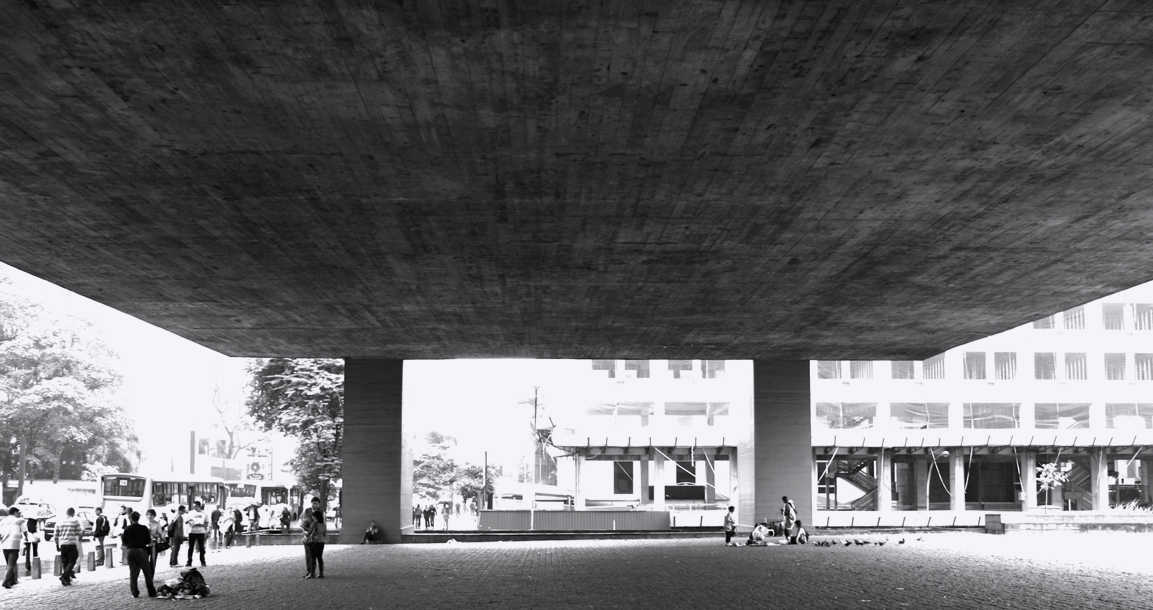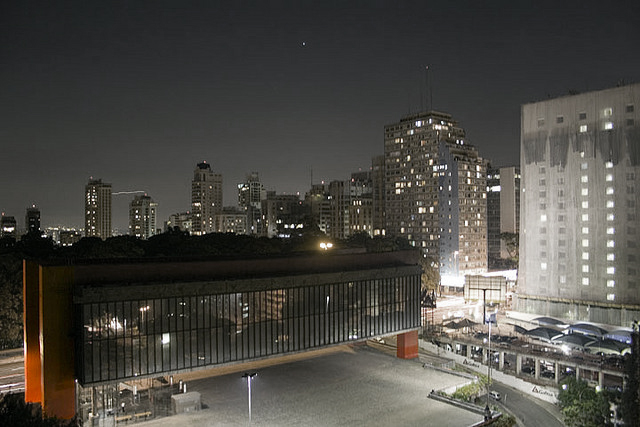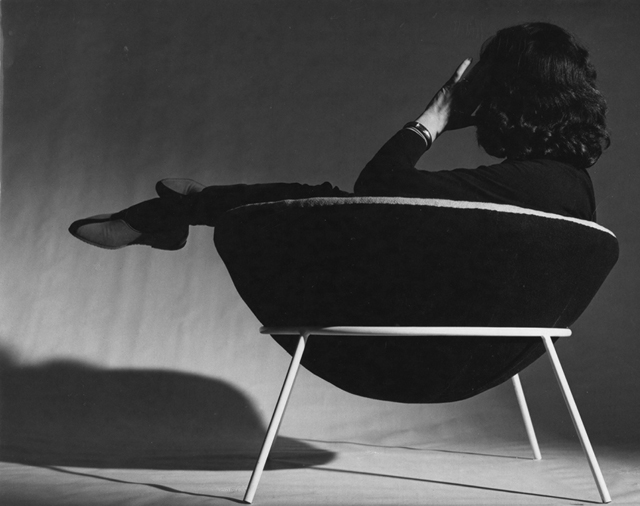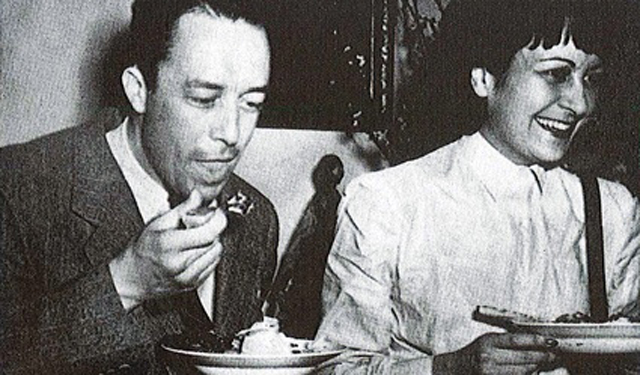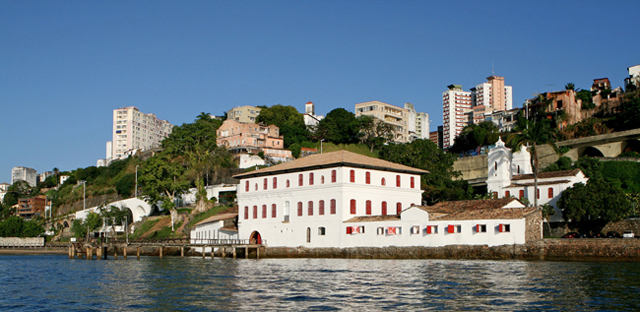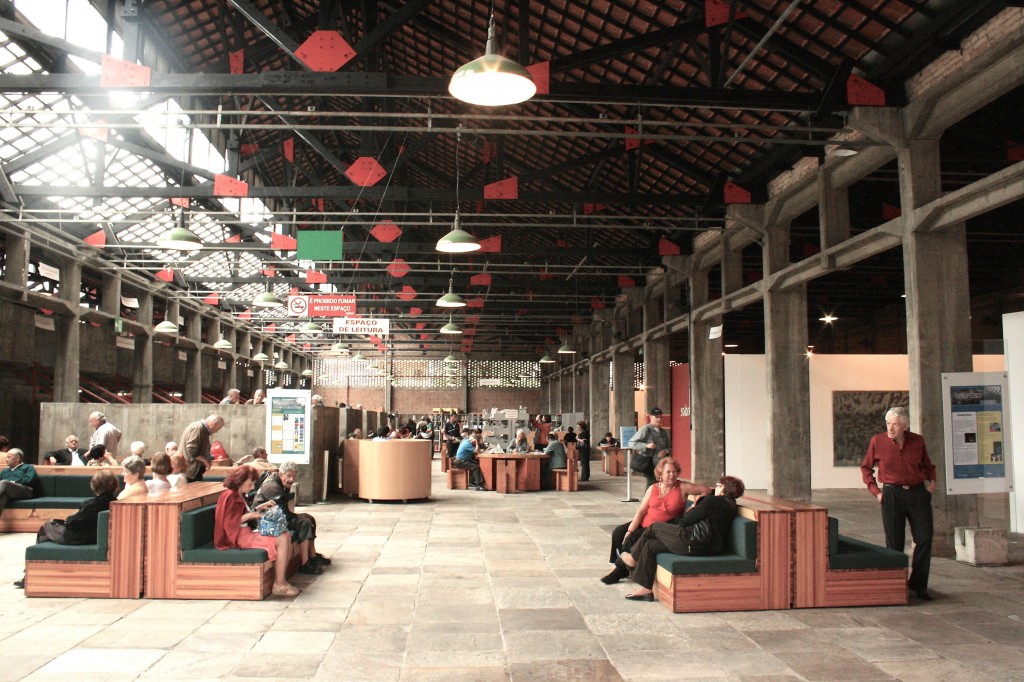Lina Bo Bardi is revered in Brasil as one of the country’s greatest architects and December sees the 100th anniversary of her birth. Her work and ideas even transcend the shadow of Brasil’s titan of Modernism, Oscar Niemeyer; she is truly an architect’s architect. Yet the greatest oddity in a country often criticised for being thin-skinned towards foreign interference is that Bardi is not a Brazilian, but Italian.
Bardi did not arrive in Brasil as child, but as an adult in her 30s in 1946 with her husband Pietro Maria Bardi, first to Rio de Janeiro then São Paulo. Both dived into their new life in Brasil, establishing the magazine Habitat and founding Museum of Art, São Paulo (MASP). Lina Bo was born in Rome in 1914, graduating in Architecture in 1939. Although Bardi publicly distanced herself from feminism she clearly made ground in the design profession in Italy’s deeply patriarchal society – Italy still has one of the lowest working female participation rates in the world at 39%, Brasil has 60% – Bardi went on to work with influential Italian post-war designer Giò Ponti and between 1944-5 was Deputy Director of Domus Magazine.
Lina, Almirante Jaceguay voyage 1946
Bardi’s work is both deeply Brazilian and highly critical. Brasil’s cultural and intellectual community have often had a fiercely nationalist streak, especially during the period leading up to and after the 1964 Military Coup. This was famously expressed during the 1967 TV Record MBP festival. The festivals, unlike today’s X Factor shows, had the cream of Brasil’s musical talent and were highly politicised. Large traditional leftist elements within the audiences reacted against any perceived intrusion of North American culture into the repertoire, electrical instruments and the miscegenation of United States and British rock and roll with Brazilian music were booed. Ironically this show, documented in the 2010 film Uma Noite em 67 opened the door to the most important cultural movements in Brasil since Bossa Nova sprang from the middle class apartment blocks of Rio’s Zona Sul, Tropicália. The changes in Brazilian culture that stemmed from this explosion in both musical and the arts are beautifully anticipated in Bardi’s designs from the late 50s.
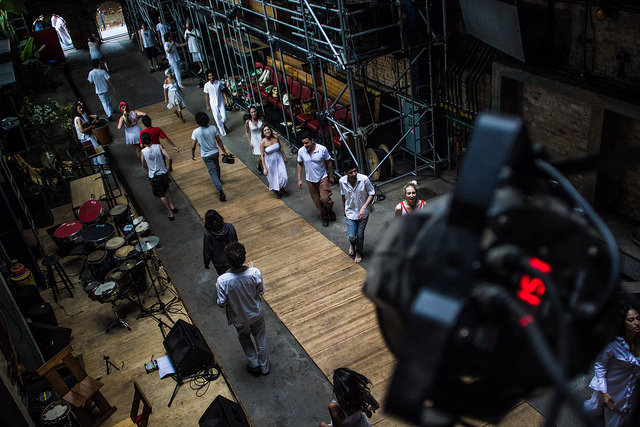
Lavagem das Escadas. Teatro Oficina
Her affinity with both high Modernism and popular culture are the hallmark of her designs. Importantly, her designs integrated the idea of a Deep Brasil, taking to heart the idea of Brazilian writer Oswald de Andrade’s Manifesto Antropófago (Cannibal Manifesto). The principle of this theory was that as a colonial country and one of the most diverse societies on earth, that Brazilian culture existed and expanded by the integration of both internal Brazilian culture and the foreign influences; foreign culture was to be mixed in the same pot as Brazilian then devoured. Much like Tropicália’s reestablishment of this idea, Bardi, as a foreigner, desired to understand her adopted country on a profound level but brought with her European Modernist design processes that meshed into something unique. Beyond her singular statements such as her home the Glass House and the MASP in São Paulo many of Bardi’s works concentrate on the refurbishment of existing buildings, an idea that was not common at the time. Bardi’s own leftist background and her adoption of Brazilian cultural cannibalism resulted in popular appropriations of existing spaces, such as the Teatro Oficina and her most regarded work, SESC Pompeia. Even the MASP in São Paulo with its bold monolithic design actually creates more space than it takes up. The undercroft and terrace looking out across the city has served as a focal point for civil society and protest in São Paulo since it’s opening in 1968. That the military temporarily closed MASP shortly after it’s inauguration is a testimony to perceived idea that her architecture was democratic and popular.
MASP, São Paulo
Bardi was also a prolific furniture designer and scenographer, notably designing sets and costumes for a 1961 performance of Albert Camus’ Calígula in Salvador. Her most famous design was the beautifully simplistic Bardi’s Bowl. Unfortunately like many Modernist icons, Lina’s famous Bowl Chair has degenerated from an expression of mass culture to a decoration for the wealthy.
Bardi’s Bowl Chair 1951
Bardi’s work is often included with external Post-War Brutalism, or Brasil’s Paulista School but it means so much more than that, and that a foreigner could achieve this kind of reverence, both in Brasil and abroad tells us much of how Bardi “got” Brasil, on a deep level. It is not a stretch to say that her work is the most “Brazilian” of Brasil’s 20th Century greats. It is easy to forget that prior to Getúlio Vargas, Brasil was a country whose cultural elites still looked to Europe, especially France, for inspiration. Many of the things that are now regarded as the most typically Brazilian; Samba, Carnival, Capoeira, Feijoada are a direct result of Vargas’ nationalist drive to create a common Brazilian culture in a vast, potentially ungovernable country. The integration of Afro-Brazilian culture into mainstream popular and high culture was a feature of Brasil’s societal development in the first half of the 20th Century. Certainly the works of Oscar Niemeyer and Alfonso Reidy took Modernism and established it within a tropical language, but Bardi’s buildings and furniture transcend climate and search for something more profound.
Lina Bo Bardi with Albert Camus eating Feijoada in the house of Oswald de Andrade 1949
Bardi is most often associated with her three iconic works in São Paulo, the Glass House in Morumbi neighbourhood, the MASP on Avenida Paulista and SESC Pompeia; however in parallel she worked promoting connections between Brasil’s poor North East and wealthier South. Bardi lived in Salvador, Bahia from 1958-64. There she immersed herself in the region’s popular culture, seeing no conflict between Modernism’s idea of mass culture and popular culture. In the same way that Niemeyer’s Modernism was a reflection of Brasil’s progressive bourgeois, Bardi’s intregated Brazilian popular culture. The concept of the Architecture of Poverty became an important tenet of Brasil’s architecture post-Coup and is most formally expressed in the basic materiality of the buildings. Paulista School master and Pritzker Prize winner Paulo Mendes da Rocha takes this to its natural extreme with raw concrete and metalwork that appears deceptively simple. Bardi moved deeper with the use of found spaces and the juxtaposition of colonial and popular elements.
Museu de Arte Moderna da Bahia
In 1959 she designed an exhibition of North Eastern culture, Bahia no Ibirapuera for the 5th Biennial of São Paulo and from this was invited to direct the Museum of Modern Art of Bahia (MAM BA). Bardi’s restoration of the existing Solar do Unhão building into the MAM BA created a precedent in her work of reclaiming spaces with a eye on modernity but without resorting to pastiche. Like the work of many of her Brazilian contemporaries Bardi’s work never required the vulgarity of Post-Modernism to express the popular.
Sadly, as with most of Brasil’s cultural life, the coup in 1964 effectively froze her ability to build because of her political affiliations to leftist politics. Most of Brasil’s major architects at the time suffered persecution at the hands of the military and she was fired as director of the MAM BA – João Batista Vilanova Artigas and Paulo Mendes da Rocha were both fired from positions at University of São Paulo and Niemeyer was exiled to France.
It was fitting that Bardi’s final work was to be the boldest statement of popular democracy of her career, the SESC Pompeia.
SESC Pompeia, São Paulo
For more on Lina Bo Bardi.
Instituto Lina Bo e P. M. Bardi 100 Years Programme
